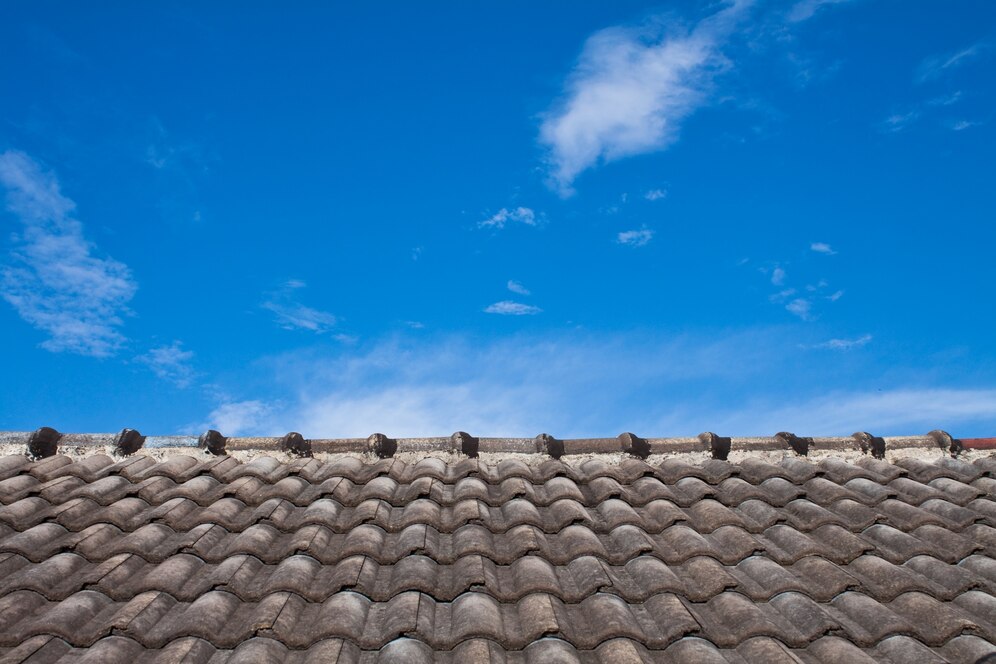Choosing the right roofing material for your home is a significant decision that can impact its aesthetics, durability, and energy efficiency. With a wide range of options available, each offering unique benefits and considerations, it’s essential to understand the factors involved in making an informed choice. In this detailed blog, we’ll explore everything you need to know about selecting the right roofing material to suit your needs and preferences.

Understanding Roofing Materials
Here’s a list of roofing materials and their key characteristics to help you make a proper decision.
Asphalt Shingles
- Asphalt shingles are the most common roofing material in North America, known for their affordability, versatility, and ease of installation.
- Available in a variety of colors and styles, including architectural shingles that mimic the look of cedar or slate.
- Asphalt shingles typically have a lifespan of 15-30 years, depending on the quality and climate conditions.
Metal Roofing
- Metal roofing offers durability, longevity, and low maintenance, making it an attractive option for homeowners seeking a long-term roofing solution.
- Available in various materials, including steel, aluminum, copper, and zinc, each offering unique aesthetics and performance characteristics.
- Metal roofs are resistant to fire, wind, and hail, and can last 40-70 years or more with proper maintenance.
Wood Shingles/Shakes
- Wood shingles and shakes provide a natural, rustic aesthetic that complements traditional and contemporary home designs.
- Typically made from cedar, redwood, or pine, wood roofing offers excellent insulation and ventilation properties.
- While visually appealing, wood roofing requires regular maintenance to prevent rot, decay, and insect infestation.
Slate Roofing
- Slate roofing is prized for its elegance, durability, and longevity, with some slate roofs lasting over 100 years.
- Available in various colors and textures, slate tiles offer a timeless aesthetic that enhances the curb appeal of any home.
- While costly and heavy, slate roofing provides unmatched durability and fire resistance, making it a worthwhile investment for homeowners seeking a premium roofing option.
Clay and Concrete Tiles
- Clay and concrete tiles are popular in Mediterranean and Spanish-style architecture, known for their durability, energy efficiency, and aesthetic appeal.
- Available in a range of shapes, colors, and profiles, clay and concrete tiles offer versatility and customization options.
- While durable and fire-resistant, clay and concrete tiles can be costly and require additional structural support due to their weight.
Factors to Consider
- Climate and Weather Conditions
Consider your local climate and weather patterns when choosing a roofing material. Some materials may perform better in hot, sunny climates, while others are more suitable for cold, wet environments or areas prone to hurricanes and high winds. - Durability and Longevity
Evaluate the lifespan and durability of each roofing material, taking into account factors such as maintenance requirements, resistance to weathering, and susceptibility to roof damage from hail, wind, and debris. - Aesthetics and Architectural Style
Choose a roofing material that complements the architectural style of your home and enhances its curb appeal. Consider the color, texture, and profile of the roofing material to achieve the desired aesthetic effect. - Cost and Budget
Determine your budget for roofing replacement and maintenance, taking into account not only the initial cost of materials but also long-term expenses such as maintenance, repairs, and energy savings. - Maintenance Requirements
Evaluate the maintenance needs of each roofing material and consider your willingness and ability to perform routine upkeep. Some materials, such as asphalt shingles, require minimal maintenance, while others, like wood shakes, may need regular cleaning, sealing, and repairs to prevent deterioration. - Weight and Structural Considerations
Assess the weight of each roofing material and ensure that your home’s structure can support it. Heavy materials like slate and clay tiles may require additional structural reinforcement, adding to the overall cost of installation. Lightweight options such as metal roofing may be more suitable for older or weaker structures if you’re having roof damage. - Environmental Impact
Consider the environmental impact of each roofing material, including its production process, recyclability, and energy efficiency. Opt for sustainable options like metal roofing, which is often made from recycled materials and can be recycled at the end of its lifespan, reducing landfill waste. - Noise Insulation
Evaluate the noise insulation properties of each roofing material, especially if you live in a noisy urban area or near airports or highways. Materials like metal roofing may amplify sound during rainfall, while dense materials like slate and clay tiles provide better sound insulation. - Fire Resistance
Assess the fire resistance ratings of each roofing material, particularly if you live in a wildfire-prone area or where building codes require fire-resistant roofing. Materials like metal roofing and asphalt shingles typically have Class A fire ratings, indicating the highest level of fire resistance. - Warranty Coverage
Review the warranty coverage offered by manufacturers for each roofing material, including both material warranties and roof replacement warranties. Consider factors such as warranty length, coverage exclusions, and transferability when comparing different roofing options, as a comprehensive warranty can provide added peace of mind and protection for your investment.
Conclusion
Choosing the right roofing material is a crucial decision that can impact the appearance, performance, and value of your home. By considering factors such as climate, durability, aesthetics, and budget, you can select a roofing material that meets your needs and enhances the overall quality of your home. Whether you opt for asphalt shingles, metal roofing, wood shakes, slate tiles, or clay/concrete tiles, investing in the right roofing material will provide lasting protection and peace of mind for years to come.
If you’re ready to select the ideal roofing material for your home, contact the experts at Magnum Home Services.
Our experienced team can help evaluate all relevant factors for your property and climate. We’ll present options tailored to your needs and budget.
Call us today at +1 (410)-999-5200 or email magnumhomeservs@gmail.com. Let Magnum Home Services guide you towards a roofing material that provides unmatched performance and protection for many years to come.
FAQs
Can I install a new roofing material over my existing roof?
Answer: In some cases, it’s possible to install a new roofing material over an existing roof, but it depends on factors such as local building codes, the condition of the existing roof, and the type of new material being installed. It’s essential to consult with a professional roofer to assess feasibility and ensure proper installation.
How can I determine if my home's structure can support heavier roofing materials like slate or clay tiles?
Answer: Determining if your home’s structure can support heavier roofing materials requires a structural assessment by a qualified professional, such as a structural engineer or licensed contractor. Factors such as the age, design, and condition of your home’s framing, as well as local building codes and regulations, will influence its load-bearing capacity.
Are there any eco-friendly roofing materials available that offer sustainability benefits?
Answer: Yes, several eco-friendly roofing materials are available, such as metal roofing made from recycled materials, cool roofs that reflect sunlight to reduce heat absorption, and green roofs that incorporate vegetation for added insulation and environmental benefits. These sustainable options can help reduce energy consumption, minimize environmental impact, and enhance the overall eco-friendliness of your home.
